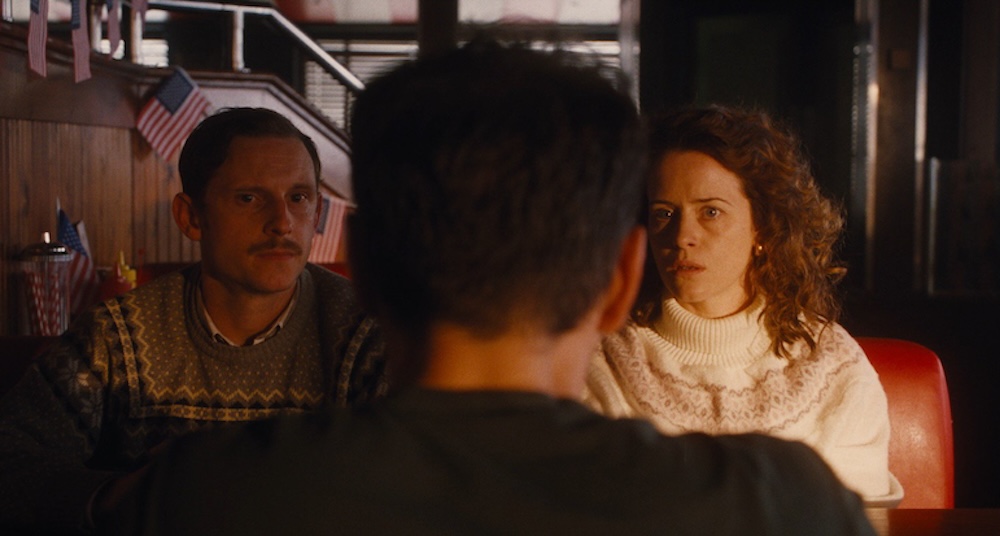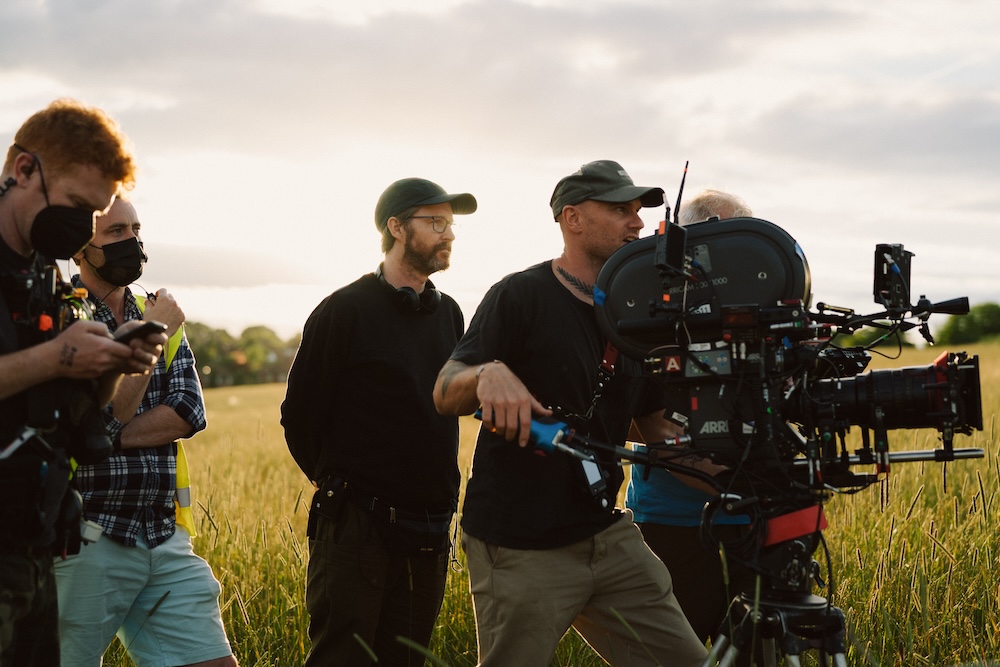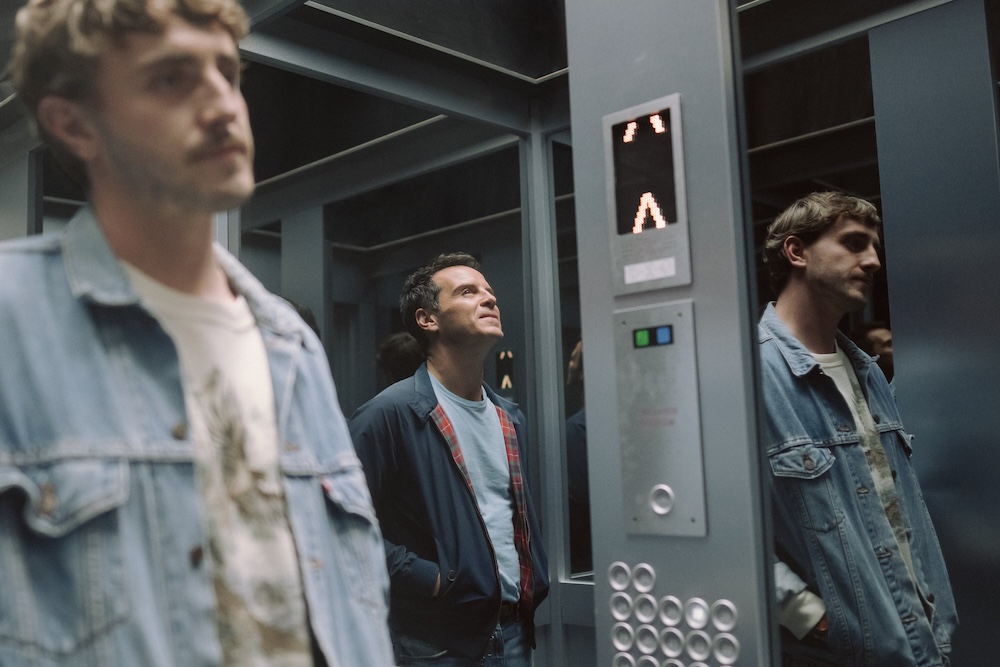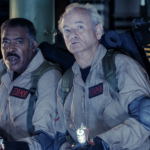
More than a feeling: All of Us Strangers
Posted on Mar 4, 2024 by Katie Kasperson
Andrew Haigh’s poignant picture All of Us Strangers is a portrait of grief, loneliness and the power of love. We hear from DOP Jamie Ramsay on capturing the sentimental and the subjective
Words Katie Kasperson
Based on the novel Strangers by Taichi Yamada, Andrew Haigh’s All of Us Strangers follows Adam (Andrew Scott), a lonely London-based screenwriter whose parents died when he was a boy. After travelling to his hometown in search of ideas, he finds Mum (Claire Foy) and Dad (Jamie Bell) still alive, just as they were when Adam last saw them 30 years before.
Adam’s reunion with his parents parallels a blossoming romance with Harry (Paul Mescal), who may be the only other resident in their hauntingly empty apartment complex. The building serves as one of the film’s most prominent visual metaphors, according to its DOP Jamie Ramsay. “Loneliness is experienced from the inside out,” he describes to us. “When I moved to the UK from South Africa, I experienced loneliness for the first time in years. As an adult, this paradox of being lonely in one of the busiest cities in the world was a scary and fairly fresh feeling for me. I saw that in this film.”
When choosing a long-form project, Ramsay tends to search for a personal connection with the subject matter. “In doing so, I feel that my response will always be honest and based on a reactive standpoint rather than an inventive one,” he shares. With All of Us Strangers, “there were certainly those beats in the script that made me sure I could do it justice.
“You can love a script,” Ramsay continues, “but if your perception of how to do it and the director’s aren’t the same, then it doesn’t necessarily work. In my first discussion with Andrew [Haigh], it quickly became apparent that we were both on a similar ground with regards to how we saw the film being made – and beyond that, just connecting as human beings.”
BACK TO THE FUTURE
Since his parents died in the eighties, Adam is trapped in two lives: one which exists in the past and one in the present. His childhood home looks just how he left it – bedroom decor still intact, clothes too small. “One of our key visual anchors was this concept of nostalgia, memory and longing,” begins Ramsay. “Since this was based on an analogue aesthetic, we wanted to represent that by shooting on 35mm film.”
This choice presented a few unexpected obstacles. First, Ramsay dealt with the uncertainty of working with film – or without a monitor. “In the last ten or 15 years, digital dailies have been almost immediate. You can see if you make any mistakes,” he explains. “On film, you do not immediately know what you’re doing because it’s analogue. You only find out 16, 17 hours later at 3am when you get your reports back. That’s an added level of stress that I hadn’t experienced in a long time.”
Another challenge was fitting a film camera into tight spaces. Haigh decided to shoot the family scenes in his own childhood home: “There’s a catharsis for him in that, and there’s a method that you get from being in that space,” comments Ramsay. “As a cinematographer shooting on 35mm, my physical footprint was probably triple that of when I shoot on a smaller digital package. Shooting in a British home with small windows, low roofs and nowhere to hide lights – it makes your life quite difficult,” he admits. “But you trust your director, and you’re there to serve the ultimate goal, which is the feeling of the movie. When I knew that he was serious about that, we just had to figure out a way to do it.”
Ramsay brought his own references to help establish the film’s tone: notably Ingmar Bergman’s Cries and Whispers and Hayao Miyazaki’s Spirited Away. “It was a combination of the stark reality of one and the mystery of the other. That was more of like, ‘What’s the feeling that I want to create with this film?’” Ramsay also cites photography, paintings, poetry and music as inspirations: “Anything that gives me the right feeling that I’m trying to obtain for the movie holistically, but also scene to scene.”
The result is a film which, both visually and narratively, feels incredibly intimate. “One example of that is the scene with the three of them in bed,” begins Ramsay. “The camera explores the scene in an uncut, five-minute take.” Then, the frame widens to reveal Adam alone, “exactly as he was as a little boy in his pyjamas, when the police lights arrived to tell him that his parents had died. That was an example of us wanting to do something quite special in a very, very tight space.”
LIGHTS, CAMERA…
From the get-go, Haigh and Ramsay both agreed that their decisions needed to be ’conscious but subtle‘. This subtlety manifested itself largely through lighting and camera movement.
“In terms of separating the two worlds, we needed to think about it technically,” Ramsay explains. “I wanted to use a more analogue palette whenever [Adam] returns to his parents and goes into his past. That meant practical lighting, tungsten and incandescent elements – and steering away from LED or HMI.”
Conversely, Adam’s apartment embraced a more digital palette. “Instead of having a big green screen wrapping around the set, we opted to include a 120ft LED wall. We projected the exact views from his apartment and we were able to use our digital lighting palette to colour-match the backgrounds.” Ramsay notes the irony in using virtual production for portraying ‘real life’ and practical filmmaking for the more surreal scenes.
To further delineate between storylines, Ramsay alternated between handheld and static. Adam’s apartment acts as a ‘cage’, Ramsay says, “where he’s stuck looking out at the world. The camera holds him within a frame and uses the negative space to create the sense of isolation.” With Mum and Dad, “the camera takes a more personal feel and becomes a bit more handheld to create three-dimensionality.”
DANCE THE NIGHT AWAY
Like with Haigh’s childhood home, Ramsay shot most of the film on location. This includes the nightclub scene when Adam and Harry take ketamine. “The whole sequence is a representation of the decay in [Adam’s] psychology,” states Ramsay. “All of it plays out in real time over a night, but there’s a load of intercut sequences that extend the relationship beyond that, which one can either take literally or not.”
Before they could film in the club, “all the lighting had to be built in,” recalls Ramsay, who wanted complete control. They combined LEDs, disco balls and intelligent stage lighting, which the crew could adjust for flashing or strobing. “What was important for me was to evolve the visual language,” shares Ramsay, “to represent how a night out actually goes.” The combination of alcohol and music and dancing and drugs ‘comes to a crescendo’, and what was once euphoria becomes paranoia. “As soon as ketamine came into the equation, it was important for me to subjectify the experience a lot more.”
When Adam ‘goes into a K-hole’, Ramsay pulls out some visual tricks such as manipulating reflections, using tighter lenses and making the camera movement “slippery and unstable. This is an obvious way to represent the feeling of your legs being taken away from you when you’re on ketamine or when you’ve had too much to drink.”
The sequence ends with Adam and Harry kissing on the dance floor, illuminated by an intense backlight. “I used a little poetic licence to represent how that moment feels,” reveals Ramsay. “You always experience it subjectively – you’re never standing outside your body looking at yourself – but it feels like you’re bathed in a God light.”
TRUST FALL
Given All of Us Strangers’ numerous sex scenes, trust was a key concern – not only between DOP and director, but also operator and actors. “That trust was all around. It was me trusting my instincts that I would react to what I was seeing carefully. It was [the actors] trusting that there was no judgement, that it was just pure acceptance and appreciation for what was going on,” describes Ramsay.
“Often, the first person that an actor looks at after delivering a performance is the operator because they are in the eyeline. It’s so important that you always represent a warm and honest sounding board for them.” Ramsay recalls creating a ‘shorthand’ with Andrew Scott and Paul Mescal specifically. “I knew that I would be inside their bubble. It was so important for me to position my energy so that it would never get in the way of their confidence or their focus.” He was also careful not to distract Haigh, so he could keep a ‘keen eye on the performance’.
Ramsay confesses that the on-set trust “stemmed from Andrew Haigh. He set a wonderful tone from day one, which was ‘the best idea wins’. I can only speak for myself as a DOP, but I think everybody loved the process of making this movie.”
BIG PICTURE
Rather than getting caught up in the technical details, Ramsay prefers to look at the bigger picture. “In this world of ever-evolving elements in what we do – where every day there are new lenses, new technology, new stuff – I would say you can always assimilate the gear.”
In an emotional film like All of Us Strangers, feeling is paramount. “What’s important is to first and foremost define exactly what it is you want to make and the feeling you want to create,” argues Ramsay. “After that, you have a plethora of choices in how to do it.”
This story appears in the March issue of Definition. Read the full magazine here.
















